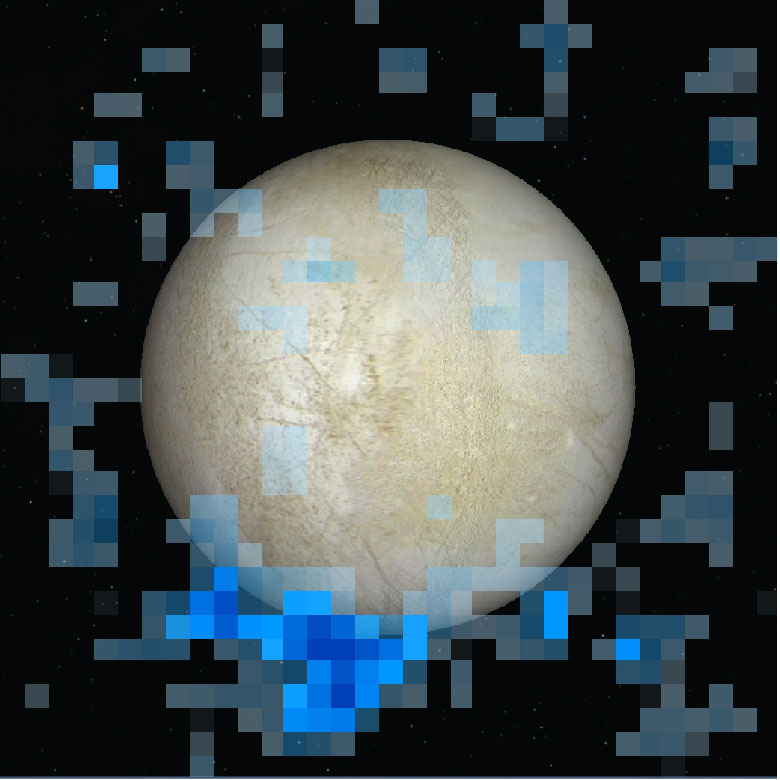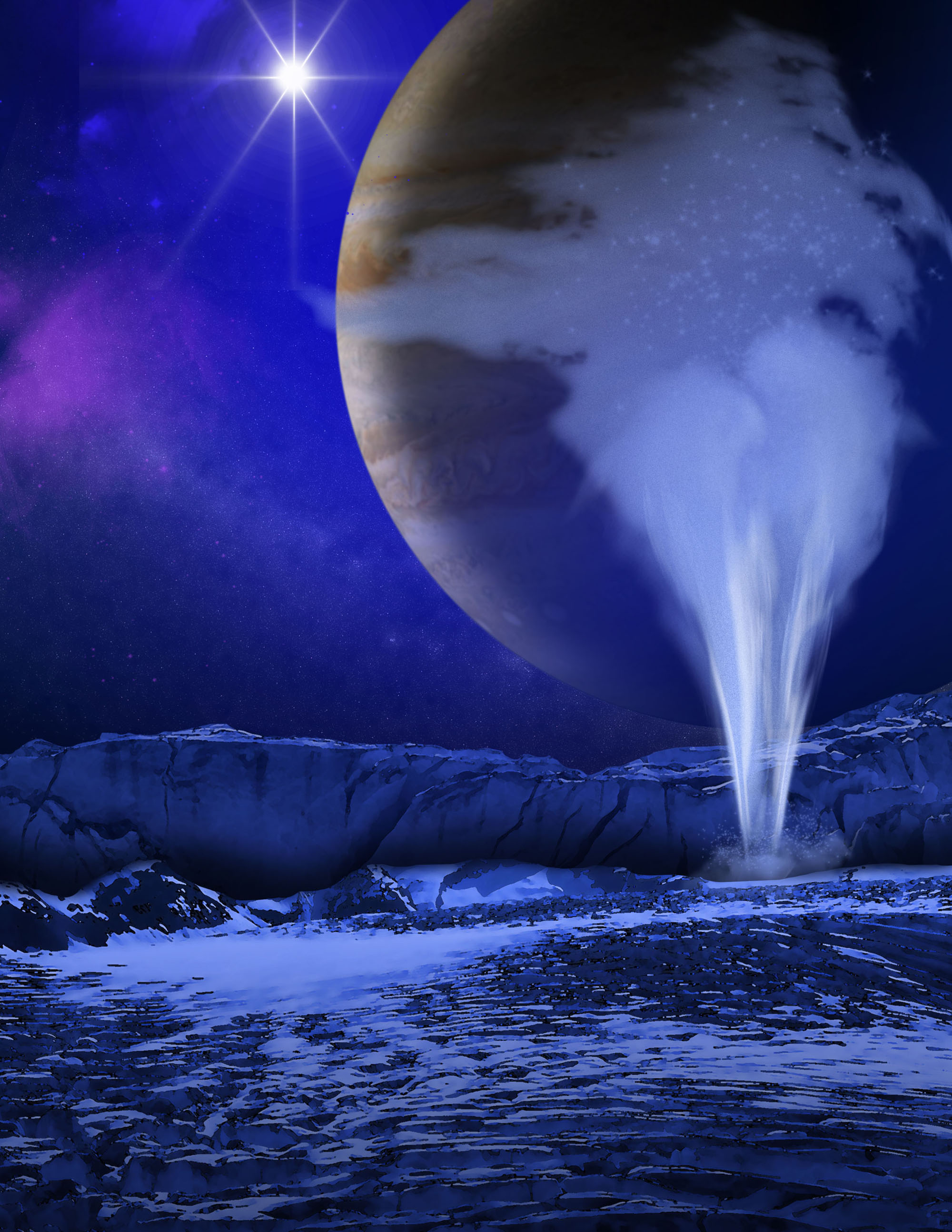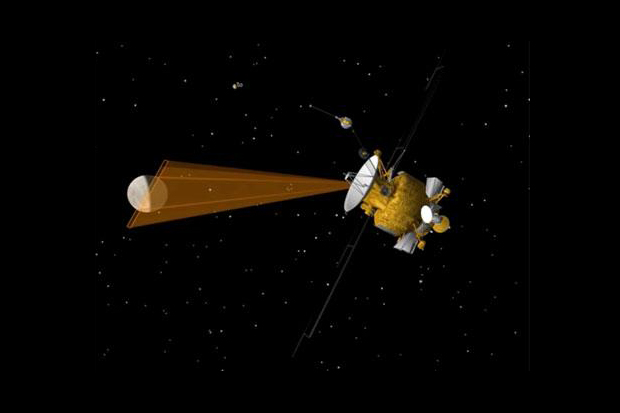
SAN FRANCISCO — The apparent discovery of water geysers on Jupiter's moon Europa makes the icy body an even more attractive target for a life-hunting mission, researchers say.
Scientists announced Thursday (Dec. 12) that they had detected transient plumes of water vapor erupting from Europa's south pole and extending about 125 miles (200 kilometers) into space. The ice-covered moon is thought to contain a subsurface ocean of liquid water, and the geysers represent a way to sample this potentially life-supporting environment, NASA officials said.

"Indeed, the plumes are incredibly exciting, if they are there," Jim Green, head of NASA's planetary science division, said here Thursday at the at the annual meeting of the American Geophysical Union. "They're bringing up material from within the ocean; perhaps there's organic material that will be laying on the surface of the south pole." [Photos: Europa, Mysterious Icy Moon of Jupiter]
The new find, made using observations by NASA's Hubble Space Telescope, could build some momentum for a mission concept the space agency is developing called the Europa Clipper.
The Europa Clipper probe would orbit Jupiter but make multiple flybys of the 1,900-mile-wide (3,000 kilometers) moon, using a number of different science instruments to study Europa's ice shell and subsurface ocean. The strategy would be similar to that employed by NASA's Cassini mission, which has made flybys of many Saturn moons since entering into orbit around the ringed planet in 2004.
"What we have been doing is studying several approaches to really understand Europa from a spacecraft in that environment, and it looks like the Clipper concept is our best one," Green said.
"Based on these [new] observations, we're going to redouble our efforts to take a good look at Clipper — its orbital trajectories, the plans for the mission architecture — to ensure that we have the right instrumentation and that we can cover this area very well and really, really understand it," he added.
Get the Space.com Newsletter
Breaking space news, the latest updates on rocket launches, skywatching events and more!

The Clipper could conceivably fly directly through Europa's plumes, taking samples as it goes, researchers said.
The Europa Clipper is not formally on NASA's books; it remains a concept at the moment, and some rethinking may be required to make the mission a reality. For example, its price tag — estimated last year to be $2 billion — is too high to be approved in these tough fiscal times, Green said.
The Clipper mission "is what we would call a flagship, and right now the budget horizon is such that we're deferring that kind of mission until later in the decade," he said.
The European Space Agency, meanwhile, has its own plans to study Europa. ESA plans to launch a mission called the Jupiter Icy Moon Explorer, or JUICE, in 2022, with arrival in the Jovian system slated for 2030.
JUICE will focus on three of Jupiter's moons: Ganymede, Callisto and Europa. However, the spacecraft will likely make just two flybys of Europa over the course of its mission, researchers said.
Follow Mike Wall on Twitter @michaeldwall and Google+. Follow us @Spacedotcom, Facebook or Google+. Originally published on SPACE.com.
Join our Space Forums to keep talking space on the latest missions, night sky and more! And if you have a news tip, correction or comment, let us know at: community@space.com.

Michael Wall is a Senior Space Writer with Space.com and joined the team in 2010. He primarily covers exoplanets, spaceflight and military space, but has been known to dabble in the space art beat. His book about the search for alien life, "Out There," was published on Nov. 13, 2018. Before becoming a science writer, Michael worked as a herpetologist and wildlife biologist. He has a Ph.D. in evolutionary biology from the University of Sydney, Australia, a bachelor's degree from the University of Arizona, and a graduate certificate in science writing from the University of California, Santa Cruz. To find out what his latest project is, you can follow Michael on Twitter.









